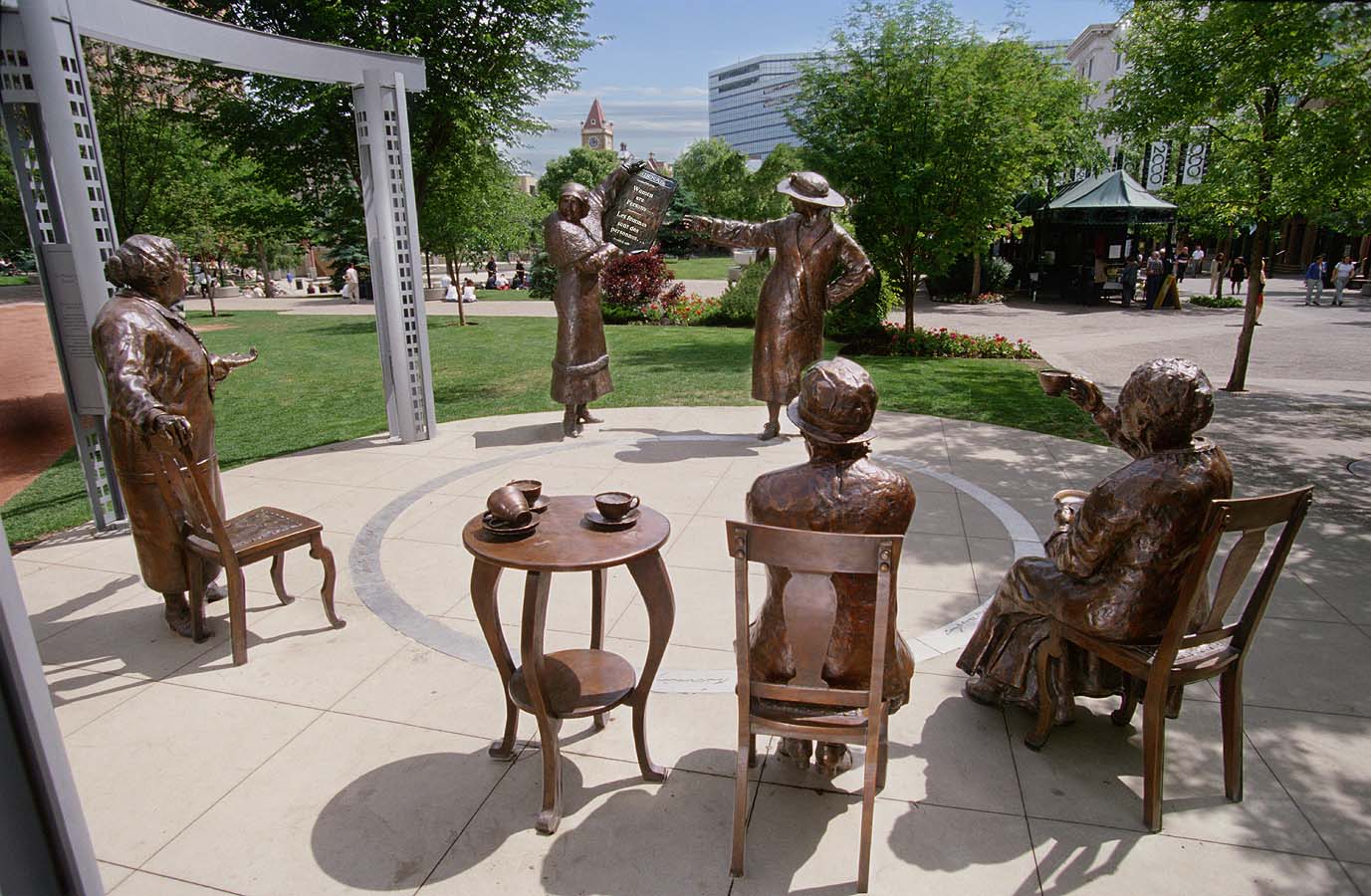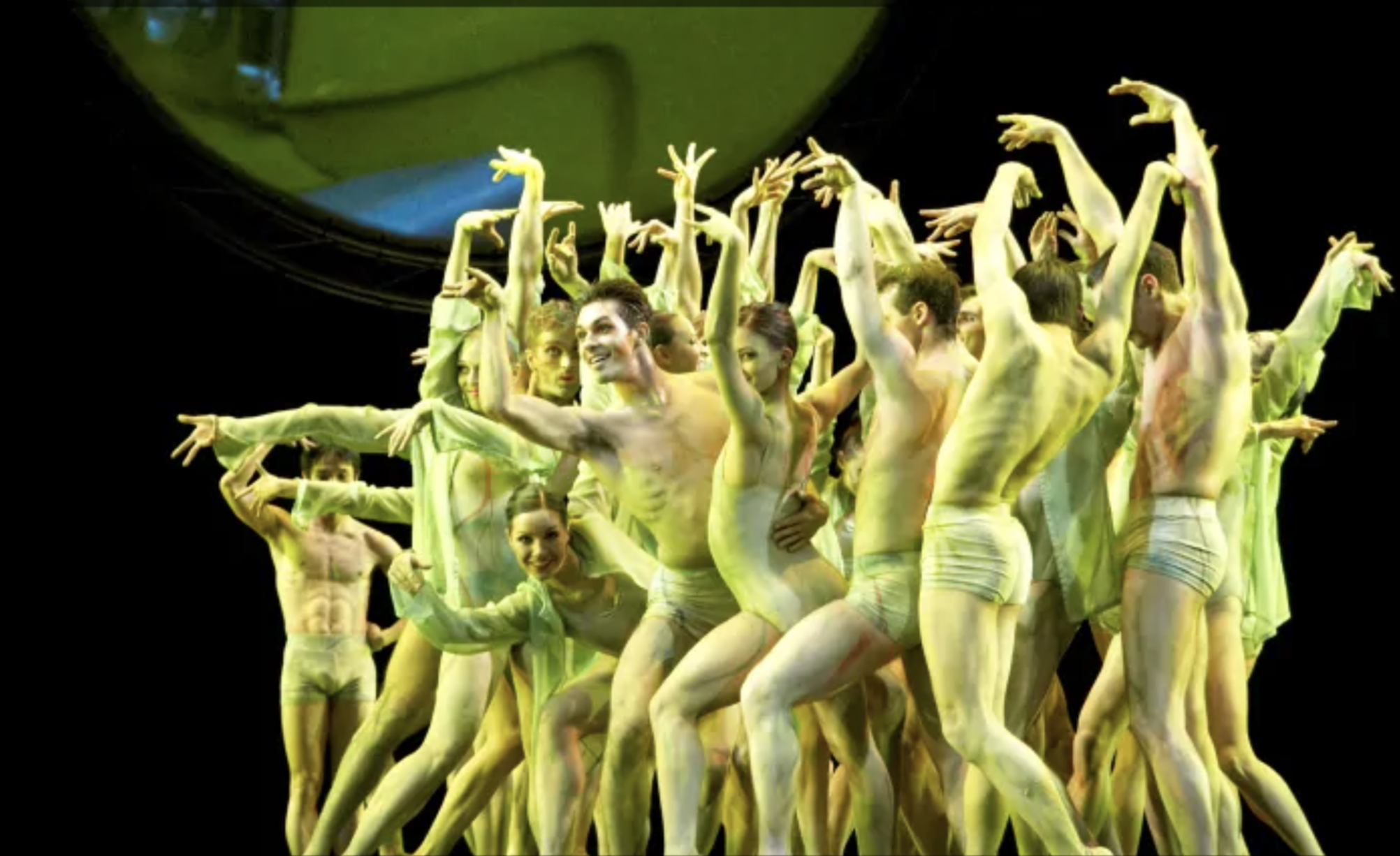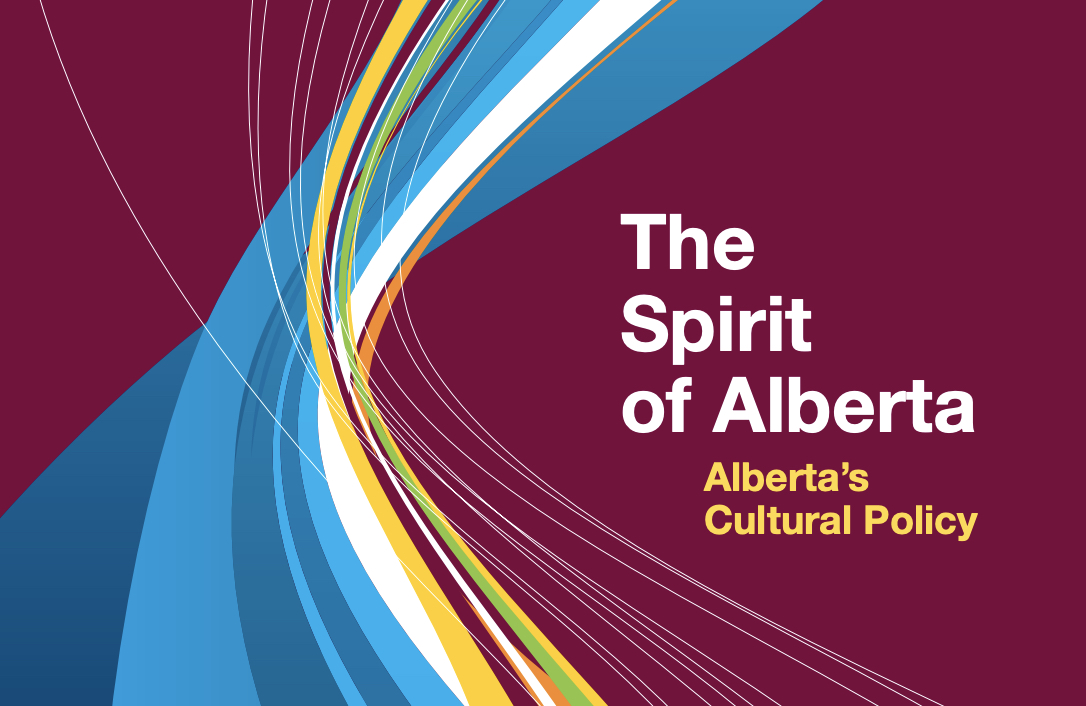
October 28, 1929 was an historic day for the 50-something-year-old country of Canada.
Thanks to 5 women from the Province of Alberta – Emily Murphy, Nellie McLung, Irene Parlby, Henrietta Muir-Edwards and Louise McKinney – Women became persons. Twenty years ago, Albertan and feminist activist Frances Wright noted the glaring absence of these 5 heroes in our collective history and decided to do something about it.
The result was a set of two larger than life bronze statues of these five celebrating The Persons Case , on Olympic Plaza in Calgary Alberta and one on Parliament Hill in Ottawa.
The bronzes are a magnificent and effective piece of public art – interactive, experiential, open, accessible, moving. It acts as an educational tool, a place for individuals to find solace, a reminder of what 5 people can do to change the world, and now a tourist attraction.
The genius of the piece is that you can walk into it, touch the tea cup that represented the tactic that they used to mobilize their troops, read from the declaration, and sit in Emily’s Chair, as so many have done for a photo op.
In 2019, Calgary Poet Laureate Sheri-D Wilson launched a project inviting Calgarians to subit a poem that would recognize people or groups that represent and reflect the spirit and values of our city. But the catch was that you could not name the person or the group. She called it YYC-PoP ( Portraits of People).
Here is the piece I submitted about Frances Wright which made it into the anthology.
Person
She made them Famous. 5 female Alberta figures,
statuesque even before the bronzes
rose out of the Calgary Olympic Plaza and
Parliament Hill in Ottawa
where only men dominated the landscape
with the exception of two British Queens, one on a horse.A work of art, for the Public. Public Art.
Enter the circle and join in an historic conversation.
Sit in Emily’s Chair. Relax.
Women are persons. Happy 70th Anniversary.And before October 18, 1929 we were??
Something with pains and penalties,
But no rights or privileges.
Her Mother Irma was born a something.
She left us 93 years later as a person. And voted in every election.
And so should you.Irene. Emily. Nellie. Henrietta. Louise.
5 powerhouses of democracy who took it to the Privy Council. And won.
The Persons Case.
No coup. No violence. No war.
An overdue and irreversible transfer of power.
Strategized over decades and cups of tea.Now they are printed and minted on our $50 Bill
and in a Girl Scout’s Badge, if you earn it.
Learn it in school, or online.
They’re everywhere. Finally. They’re Famous.“Disturbers are never popular – nobody ever really loved an alarm clock in action….” Said Nellie.
I set my clock at 6 am as one would do.
She sets hers at 5:55
[and so should you]Try and thank her.
To the hundreds, the thousands
she catalyzed, mobilized, inspired,
She smiles “I didn’t do this. You did.
And like Emily, may you feel equal to high and splendid braveries!”Friend. Sister. Daughter of the quiet revolutionaries.
Builder. Illuminator. Convenor. Educator. Person

